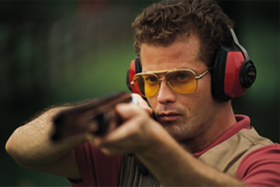For some gun enthusiasts, learning about myriad types of ammo may add to their love of firearms. Others, such as forensic experts, military historians, or those with a career in law enforcement, may need to learn about different types of ammo for their job. Whether you’re learning about ammo for the first time, or you’re a seasoned expert looking for new information; everything you need can be found at Ammo.org.
Quality
If there’s one thing you should be willing to spend a little extra on in order to ensure reliability, it’s your ammo. Whether purchasing online or in a local store, evaluate all the factors before deciding to buy. Cheapest isn’t necessarily the best option; accuracy is is a key element in choosing a bullet. Oftentimes, the less expensive brands will sacrifice accuracy in order to save money, which will end up costing you more in volume to make up for all your missed shots. Trying to pinch a penny on bullets in the short term will almost certainly end up costing you more in the long run.
Surplus
If you want to save money on your munitions without sacrificing quality, consider a surplus store. When a soldier is discharged at the end of his military service, all his weapons and ammo are reclaimed by the government. After the end of WWII, massive amounts of leftover military supplies were imported into the U.S to be sold as a result of this practice. Military surplus stores have sprung up everywhere to unload these high-grade goods; surplus supply can often be much less expensive than big box sporting goods stores.
Accuracy
Of course, everyone wants the most accurate choice of ammunition for their shooting, depending on preference and shooting goals.
● Long-nosed bullets have a high rate of accuracy with a very flat trajectory.
● Round-nosed bullets have an arched trajectory, but can also be quite accurate.
● Boat-tail bullets are very popular for their high accuracy, and are particularly preferred for matches and shooting contests.
Ballistics
Another factor to consider before purchasing is ballistics. A bullet which maintains its initial velocity all the way to its target is an efficient bullet, with an impact that retains all of its high energy. Long, sleek boat-tail bullets typically rank highest in both accuracy and ballistic efficiency. The bullet’s impact performance, or terminal performance, should also be taken into consideration. A bullet which explodes upon impact will create a larger wound, but it has to penetrate unbroken. Finding a balance between the two is key.
Calibers
Air guns and BB guns both will use .177 caliber bullets, and either choice is a great way to start kids out, both for learning to shoot and for learning about gun safety. For small arms, the range of calibers runs from .17 to .50. The lower caliber bullets will be smaller and faster than the larger caliber bullets. The .38 caliber, used in 357 revolvers, is one of the most popular, particularly the .38 Special Ammo. These bullets strike a great balance between recoil reduction and cost savings. Keeping a good amount of 9mm ammo or 45 acp on hand is a good idea to round out your supply.
Cleaning
Munition must be stored under the proper conditions, as safety should be of the utmost concern. Dirt can be scrubbed off by using a vibrating tumbler, available anywhere that sells weaponry. Before loading, the shell should be explored for marks. Any unsound, warped, or unreliable rounds should be recycled. Never take a chance on a round you think looks damaged or dirty in any way; it could cost you anything from a limb to your life, not to mention ruining your firearm.
Making your choice
Finally, your weapon choice, and your munitions choice, will depend entirely on your needs. For example, a hunter shooting flying targets is probably going to be better off with a shotgun and its wide-ranging spray of buckshot. A rifle will be better for power or precision shooting. Long-range shots will require a smaller, faster bullet; hollow-point bullets will decrease the risk of collateral damage while adding lethality. Whichever weapon and bullets you choose, keep safety at the forefront. Your weapon should always be treated as if it’s loaded with live ammo; give your guns the care and respect they deserve and they will serve you well for many years to come.

